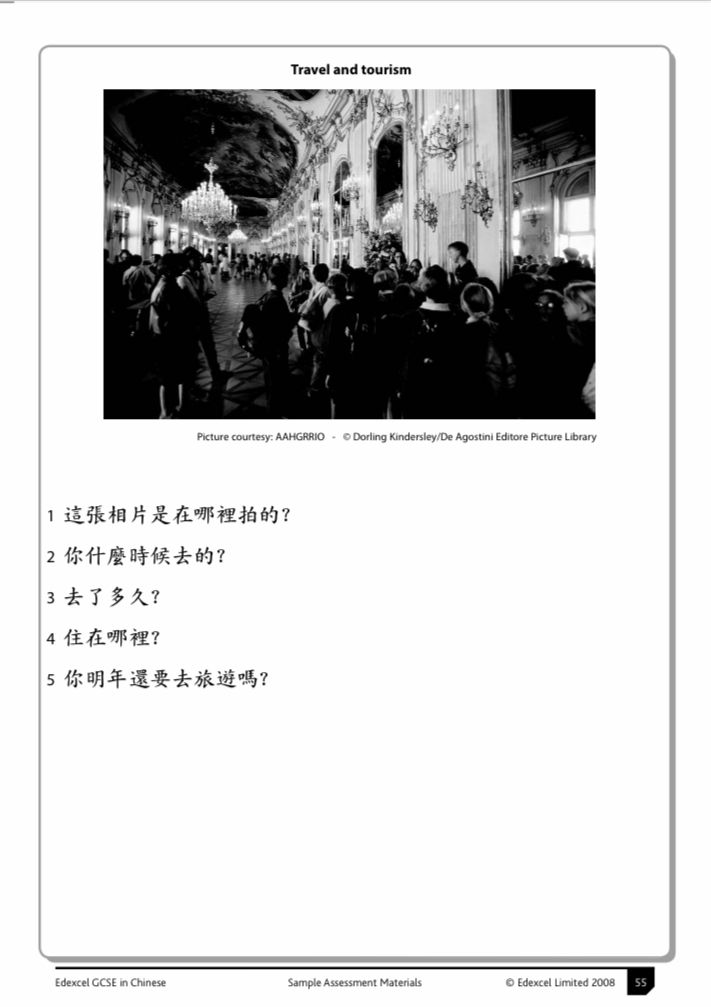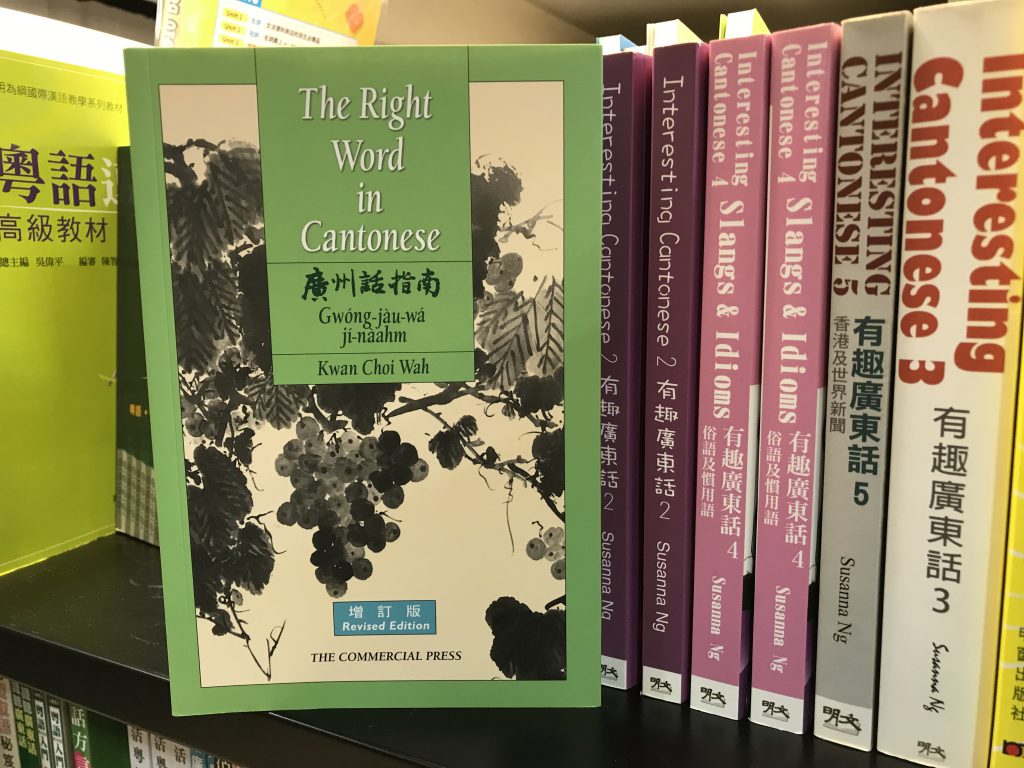Chinese as a Second Language learners struggle to learn Chinese under the current curriculum.
By Victoria Fong
Alysha Bibi, a year one student at the University of Hong Kong, only started to learn Hong Kong Chinese seriously when she was first enrolled in a local secondary school in Hong Kong at the age of 12. While local students were having regular Chinese classes at school, she had to attend one-on-one Chinese classes to catch up to her peers when she was in Form One. Form One is the first year of secondary school in Hong Kong, traditionally taken at the age of 12 or 13.
Despite being born and raised in Hong Kong, Bibi never received proper Chinese education before secondary school. The journalism student studied at Li Cheng Uk Government Primary School, where traditionally a large part of the student body hails from ethnic minority backgrounds. Chinese lessons there only covered basic knowledge.
“I didn’t even know how to write my name (in Chinese) when I was in primary school. I didn’t even know how to write my school’s Chinese name either. All I remember was counting numbers,” Bibi says.
When Bibi entered secondary school, she discovered that her Chinese knowledge was not enough to handle the curriculum. She remembers being unable to answer questions in Form One Chinese History classes due to her inadequate Chinese level.
“The question was ‘What policy was implemented by the emperor?’ and I remember my Chinese was so bad that I answered: ‘He ate fruit,’” she recalls.
Bibi’s Chinese improved after attending one-on-one classes in Form One. In Form Three, she started learning Chinese with Form One Chinese students. In Form Six, she eventually took the Applied Learning Chinese (ApL(C)) examination.
The ApL(C) subject was introduced as an alternative qualification for the Chinese Language (Category A) subject in the Hong Kong Diploma of Secondary Education (HKDSE) examination in the school year of 2014-2015.
According to the Hong Kong Examinations and Assessment Authority (HKEAA), the results of Attained and Attained with Distinction in ApL(C) are equivalent to Level 2 and Level 3 or above of the Category A Chinese subject in HKDSE respectively.
Her school’s focus on Bibi’s Chinese education came at the expense of other learning opportunities. Believing Bibi needed to set aside more time to study Chinese, her teachers persuaded her to take only two DSE electives.
“(The teachers) said, ‘You need (to focus on) Chinese, it’s too difficult for you’, so I ended up choosing two electives,” she explains.
To enter any of the Joint University Programmes Admissions System (JUPAS) participating institutions, applicants are required to attain Level 3 or above in the Category A Chinese Language DSE exam. Non-Chinese speaking (NCS) students are allowed to take alternative Chinese language exams as a substitute for this requirement. ApL(C) is one of the alternative options.
Alternative Chinese language qualifications and the minimum grade required for admission into the JUPAS participating institutions*
| ApL(C) | GCE (A-Level) | GCE (AS Level) | GCE (O-Level) | GCSE | IGCSE | |
|---|---|---|---|---|---|---|
| The University of Hong Kong | Attained | Grade E | Grade E | Grade E | Grade E | Grade E |
| The Chinese University of Hong Kong | Attained | Grade E | Grade E | Grade E | Grade C | Grade C |
| The Hong Kong University of Science and Technology | Attained | Grade E | Grade E | Grade E | Grade E | Grade E |
| City University of Hong Kong | Attained | Grade E | Grade E | Not recognised | Grade C | Grade C |
| The Hong Kong Polytechnic University | Attained | Grade E | Grade E | Grade C | Grade C | Grade C |
| Hong Kong Baptist University | Attained | Grade E | Grade E | Grade C | Grade C | Grade C |
| Lingnan University | Attained | Grade E | Grade E | Grade C | Grade C | Grade C |
| The Open University of Hong Kong | Attained | Grade E | Grade E | Grade E | Grade E | Grade E |
| The Education University of Hong Kong | Attained | Grade E | Grade E | Grade C | Grade C | Grade C |
*Source from JUPAS
*Certain programmes do not accept alternative Chinese language requirements, or will require applicants to submit additional proof of Chinese language proficiency in order to be accepted into the programme.
Two Sides of the Same Coin
While some non-Chinese speaking (NCS) students, like Bibi, spend their secondary school catching up on Chinese, other NCS students enter secondary school to discover that they are sent back to square one.
Chetrit Nipurna KC is one of them. KC, also born and raised in Hong Kong, is a 21-year-old studying law at City University of Hong Kong.
KC learned Chinese in primary school. When she left primary school, her Chinese level was comparable to other local Primary Six students.
She then continued her study at Delia Memorial School (Hip Wo). She was placed in her school’s Chinese as a Second Language (CSL) curriculum where she studied the General Certificate of Secondary Education (GCSE) Chinese curriculum. GCSE Chinese is equivalent to Primary Three level in Hong Kong.

KC observes that her class was composed of students with varying Chinese levels. While some of her classmates found the curriculum useful, she found it repetitive.
“There were students from other countries who had never learned Chinese before and those who were relatively weaker in Chinese, so (the GCSE Chinese curriculum) was beneficial to them. But for me, it wasn’t very beneficial,” she explains.
KC believes her Chinese would be better if she had progressed instead of going backwards in secondary school.
“I felt like my efforts in primary school were in vain,” she says. “By adjusting the level in Form One, it made me think Chinese was easy and demotivated me to learn Chinese.”
“I felt like my efforts in primary school were in vain. By adjusting the level in Form One, it made me think Chinese was easy and demotivated me to learn Chinese.”
Bibi and KC’s experiences stem from the lack of a standardised CSL curriculum.
The Curriculum Development Council of the Education Bureau published a Supplementary Guide to the Chinese Language Curriculum for Non-Chinese Speaking Students in 2008. The guide explains the Chinese Language curriculum framework “provides schools with flexibility and autonomy”. Teachers are advised to adjust the curriculum and teaching strategies according to the abilities and interests of NCS students.
But the guide is not a standardised CSL curriculum.
According to Hong Kong Unison, a non-government organization advocating for ethnic minority rights, the lack of concrete objectives means Chinese learning is school-based. Different schools offer different examinations and curricula, based on university entrance requirements.
JUPAS, the main system for students to apply for undergraduate programmes in Hong Kong, accepts six alternative qualifications in Chinese for NCS students, including ApL(C) and GCSE. The alternative qualifications vary greatly in their level of difficulty, resulting in uneven levels of achievement for CSL learners.
Local School’s Struggle
Wong Kai-chi is a Chinese teacher for non-Chinese speaking students in True Light Girls’ College, a local secondary school. He identifies the difference in NCS students’ Chinese proficiency as a serious challenge.
NCS students in the school take international Chinese examinations in Form Four or Five, such as GCSE and General Certificate of Education (GCE).
The school has admitted students whose Chinese are at Primary One standards. One student did not know any Chinese. At the same time, they have admitted students whose abilities are on par with their local peers.
He questions how teachers could design curricula for students with such different language levels. “What if these students are in the same form or the same class? How should teachers design the curriculum? Which textbook should be used? Does the textbook matter in this case?” he says.

“We try our best to help our students. But if we had to arrange tutorial classes for students with different Chinese abilities, then we would need infinite classes,” he says.
“If we had to arrange tutorial classes for students with different Chinese abilities, then we would need infinite classes.“
Turning Over a New Leaf
Professor Gary Wong Yu-ka from the Department of Curriculum and Instruction at the Chinese University of Hong Kong explains that the CSL framework does not provide clear instructions for teachers.
“Without clear instructions, teachers are unsure of what exactly they should do to achieve the learning goals of the framework,” says Wong.
“For first language learners, there are textbooks, clear level descriptors and assessment tools. Teachers have a clear picture on how to teach them,” he adds.
Wong believes that the first step to improve the CSL curriculum is to implement a systemic assessment for NCS students in Hong Kong.
“We have to first understand the general performance of these students before we can establish reasonable learning goals,” he says. The education professor believes this is feasible, as territory-wide assessments like the HKDSE examination have long existed.
Wong believes that there must be a clear understanding of their abilities. Only then can scholars and teachers design a curriculum with specific learning purposes and assessment tools. “Without a set of standards for reference, discussions on a better curriculum would be groundless,” he says.
Imagining a New Curriculum
Pete Cheng Juk-hei, communication officer of Hong Kong Unison, explains that the government’s framework lacks a “second language learning perspective element.” The framework divides the learning stages for the first-language curriculum into smaller fractions, which is called the ‘small-step’ approach.
“The current framework is a fragmented version of the first-language curriculum,” Cheng explains. “Supplementary resources are still based on a framework that is developed from a first-language perspective,” he adds.
“A better education policy should include assessment methods, effective monitoring, key performance indicators, professional development for teachers, home-school cooperation, and holistic description of stages of learning,” he says.
Edited by Patricia Ricafort
Sub-edited by Shell Zhang











































